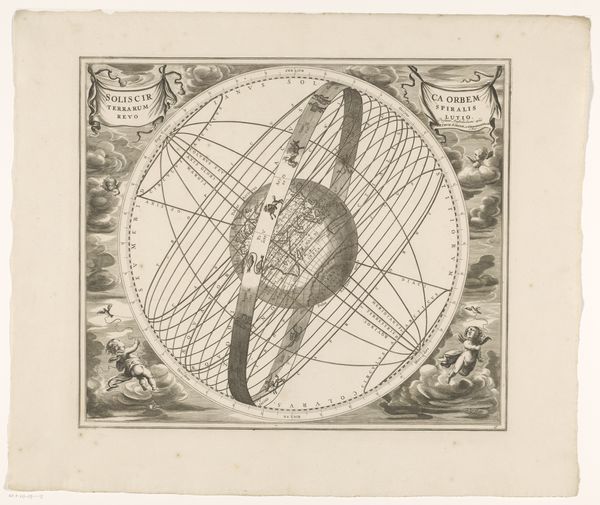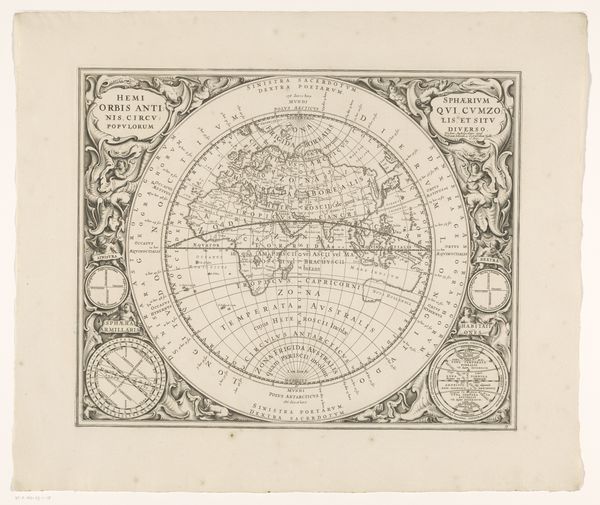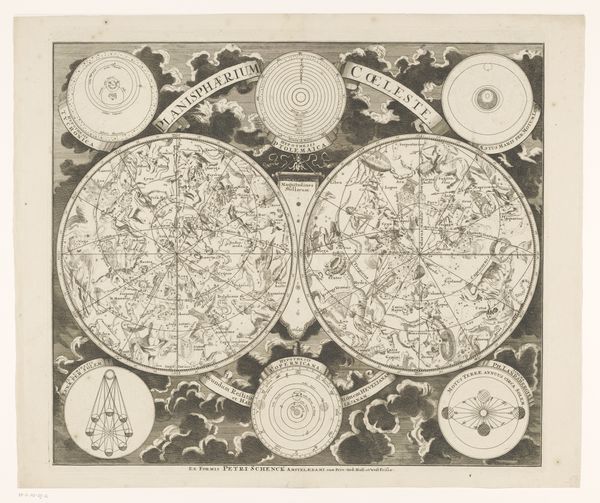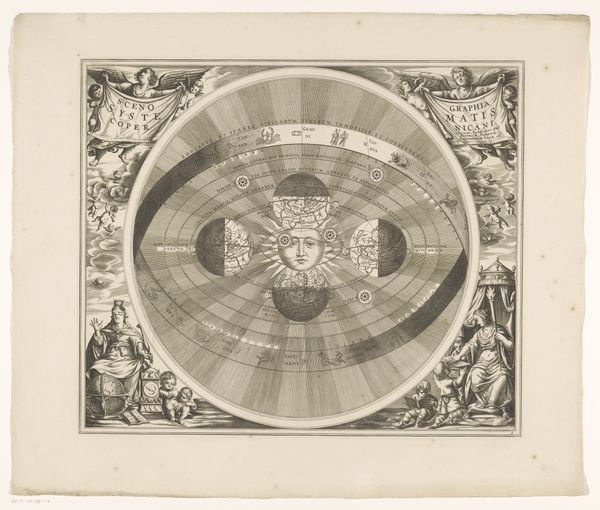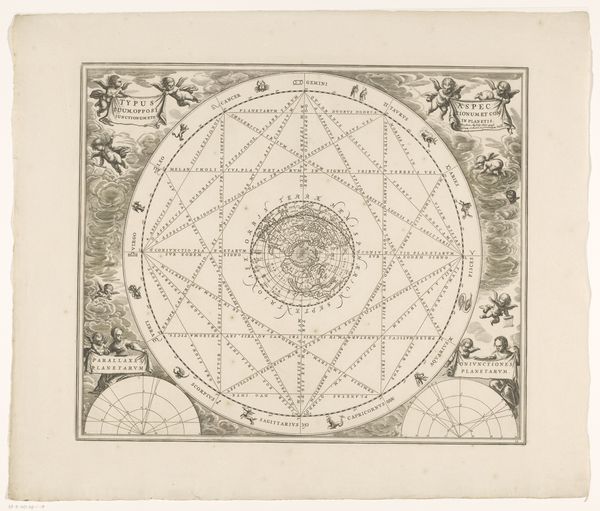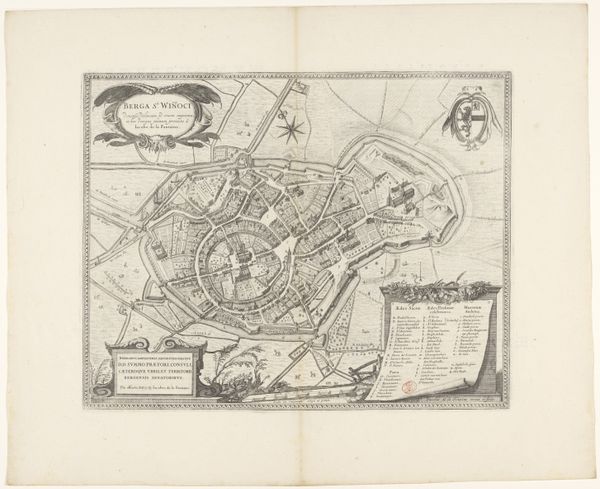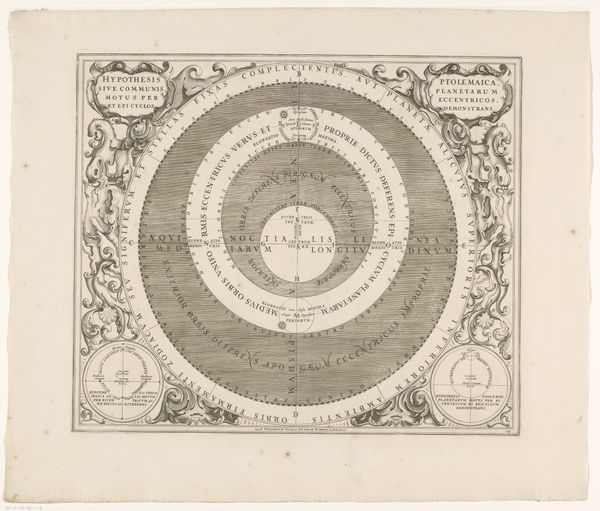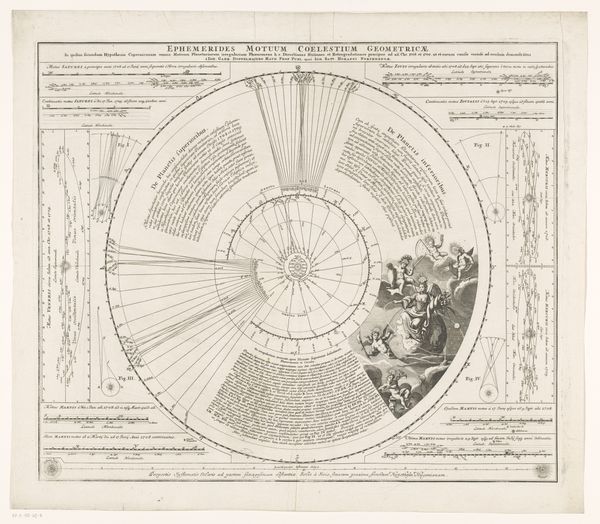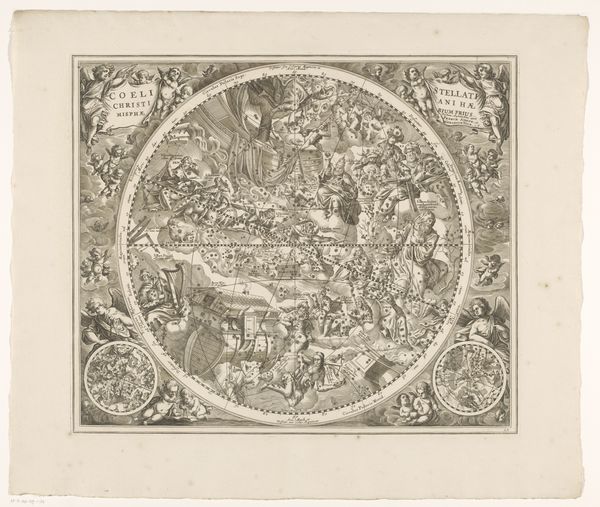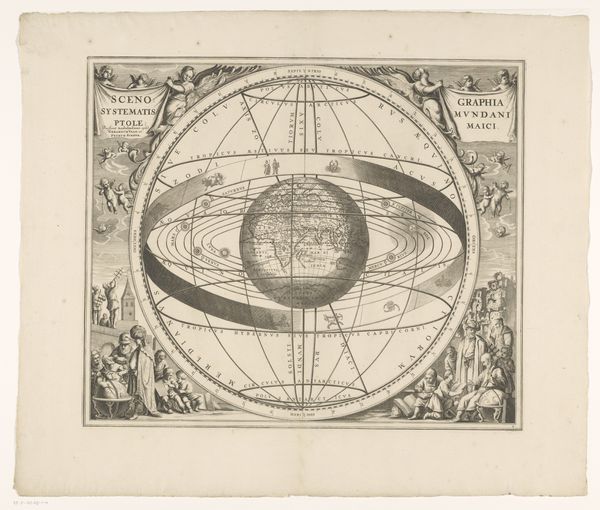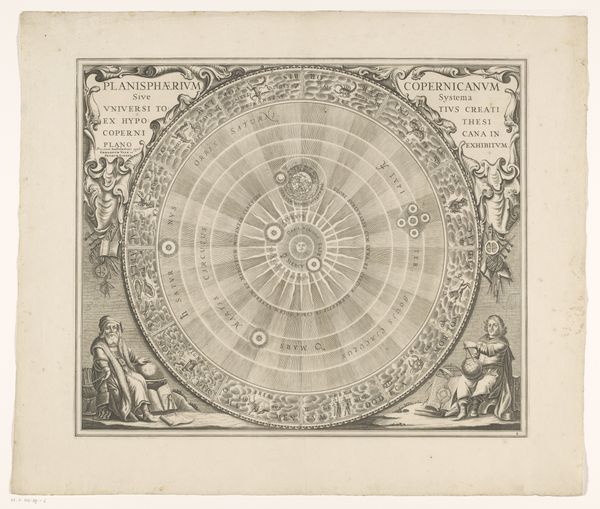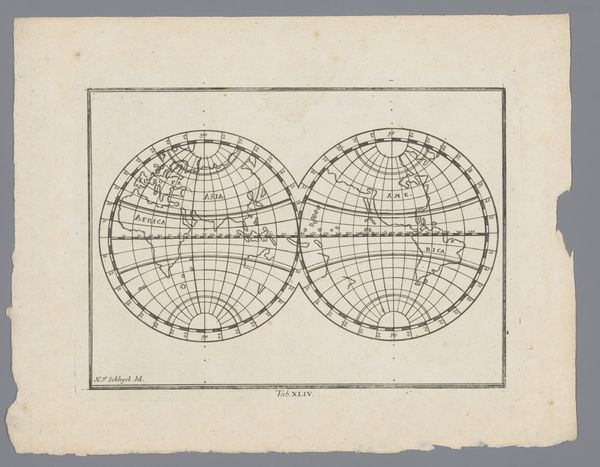
print, engraving
# print
#
geometric
#
islamic-art
#
history-painting
#
academic-art
#
engraving
Dimensions: height 432 mm, width 509 mm
Copyright: Rijks Museum: Open Domain
This is "Hemelkaart van de aarde volgens het stelsel van Ptolemaeus" by Johannes van Loon, made sometime in the 17th century. It's a celestial map rendered with fine lines and delicate engraving. The dominant visual element is the armillary sphere, presented as a framework of circles and bands, overlaid on a map of the earth. The structure is fascinating: notice how Van Loon uses the sphere to suggest the cosmos itself, with the earth at its center, as Ptolemy envisioned. Lines demarcate the tropics and zodiac, creating a complex web that speaks to the era’s understanding of the universe. The cherubic figures in the corners add an allegorical dimension, framing scientific inquiry within a classical context. Consider the semiotic implications; the map is not just a depiction of space, but a statement about knowledge and order. The detailed lines and circular forms, while aiming to map the heavens, also challenge fixed perspectives. The very act of mapping can be seen as imposing a structure onto the unknown. This piece is an example of how art and science intersect, shaping our perception of the world.
Comments
No comments
Be the first to comment and join the conversation on the ultimate creative platform.
